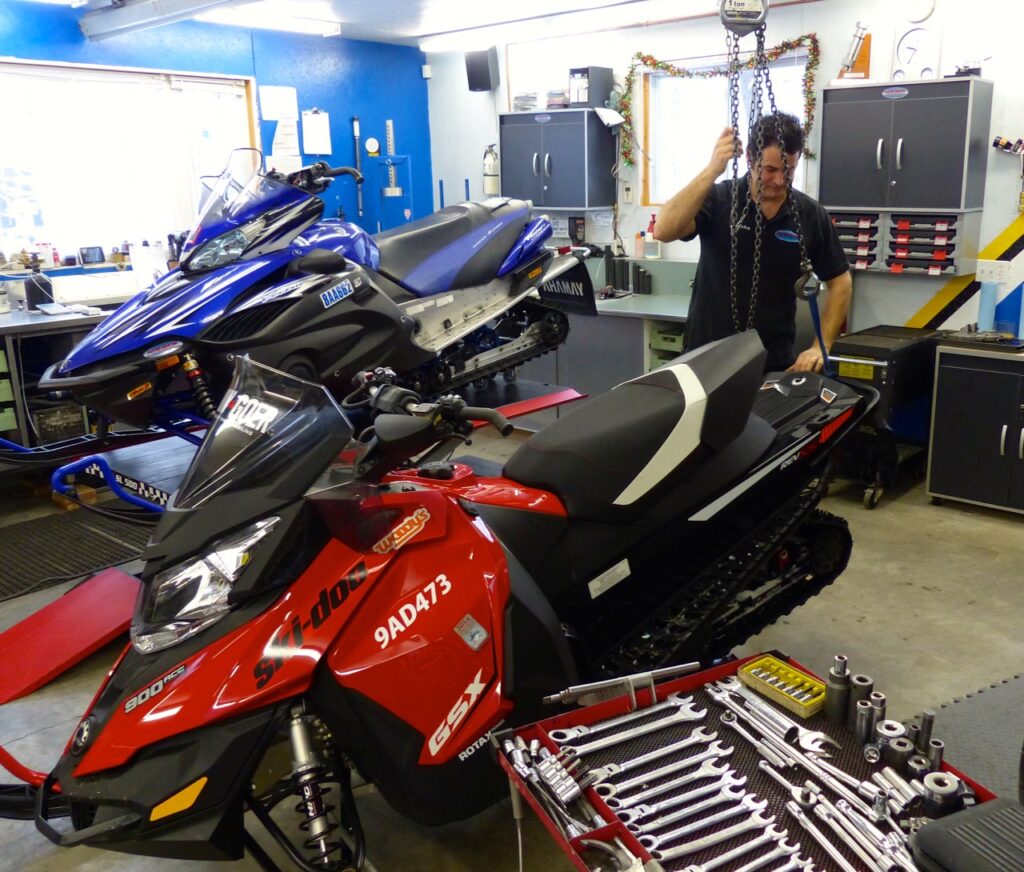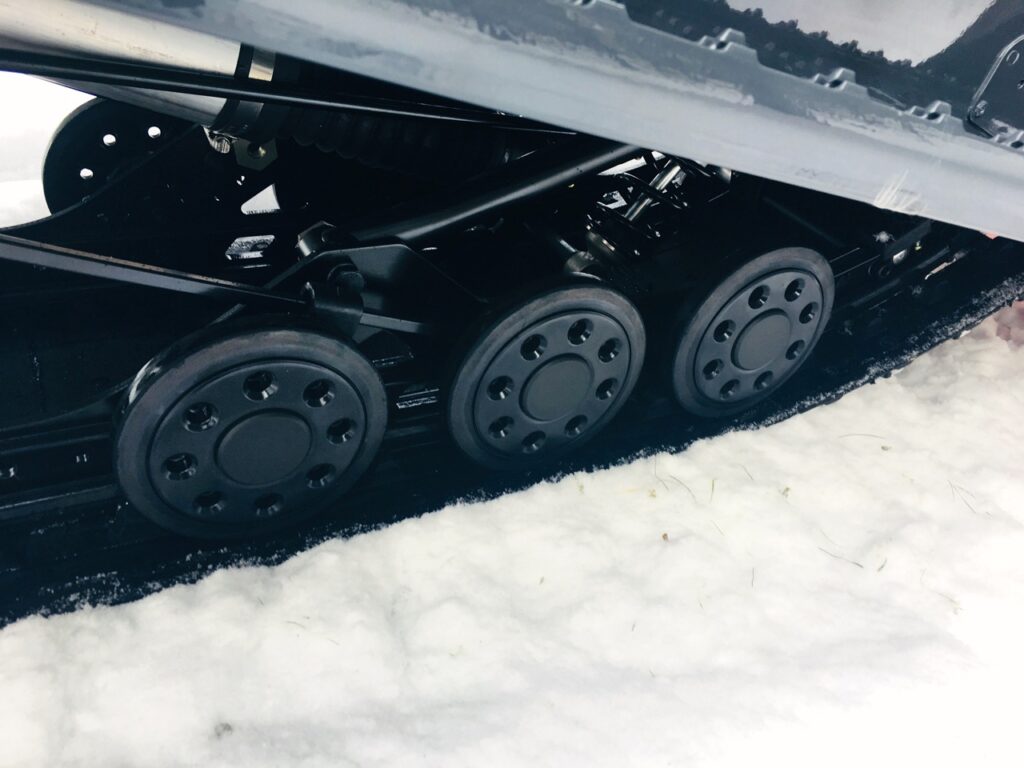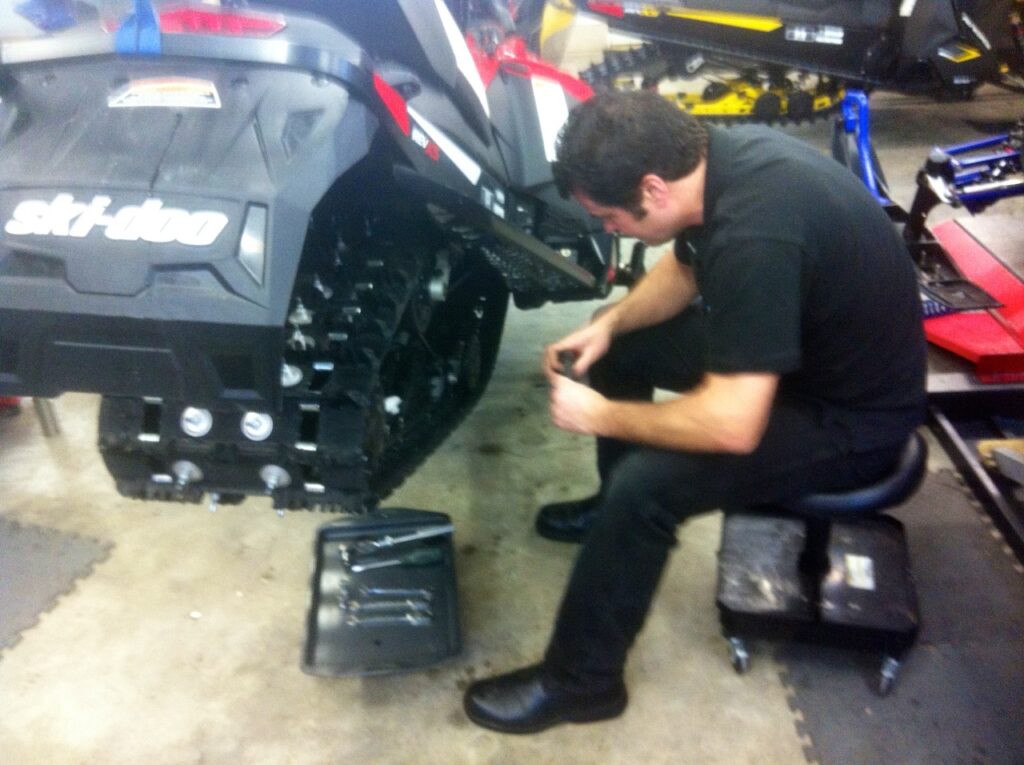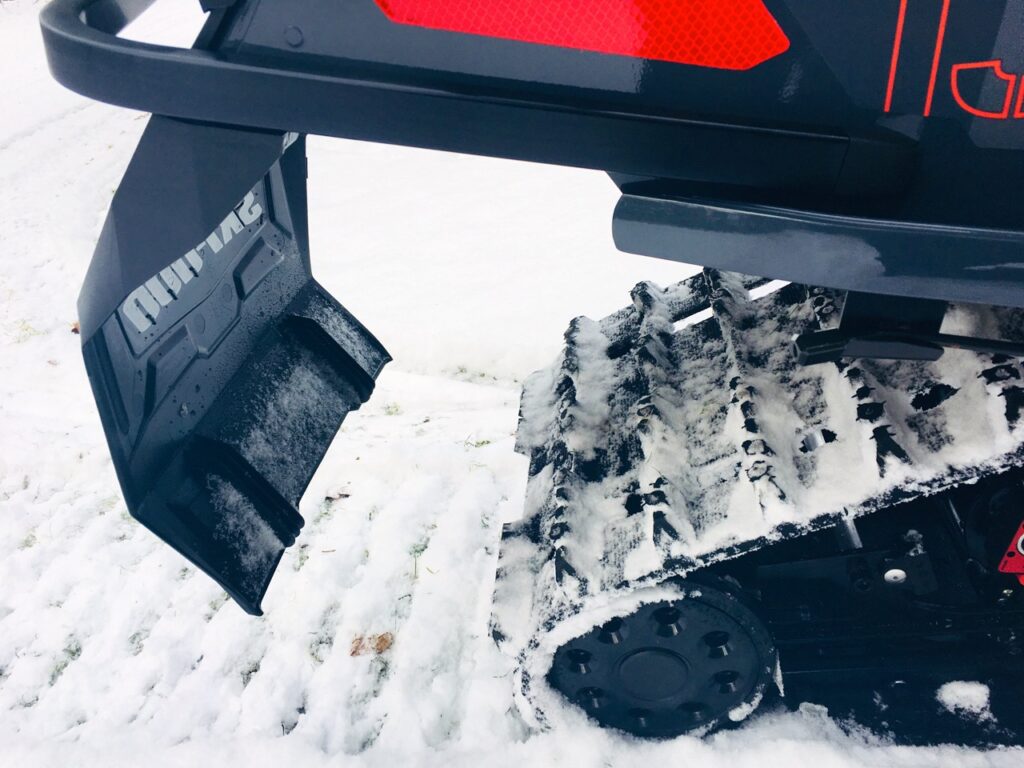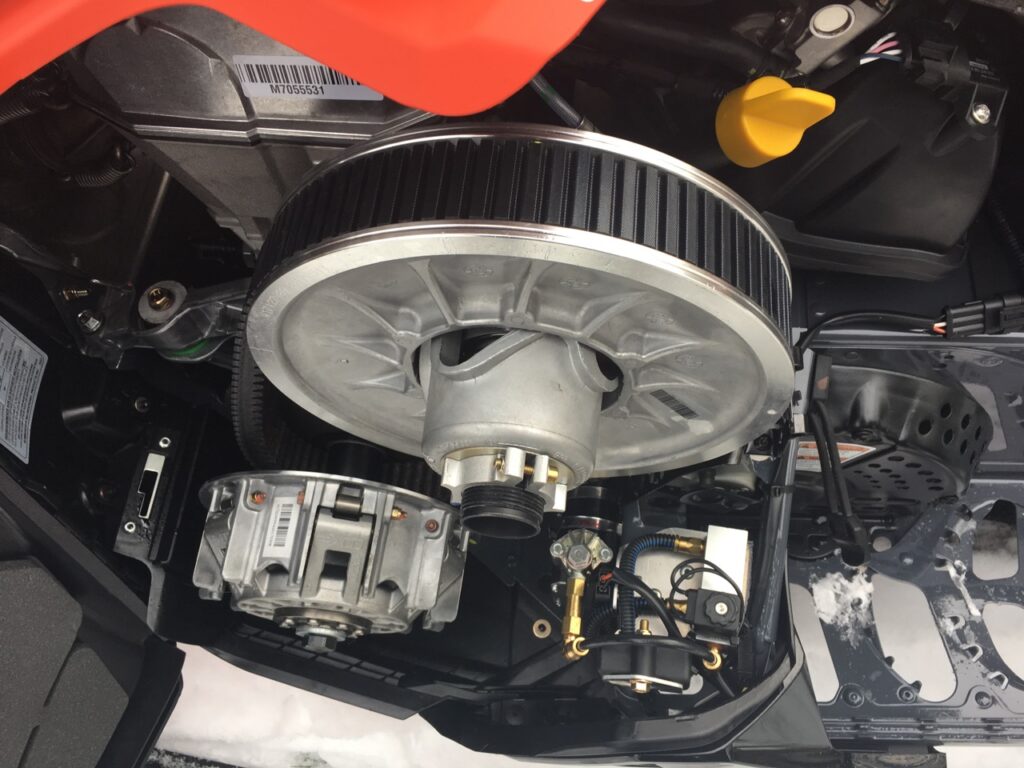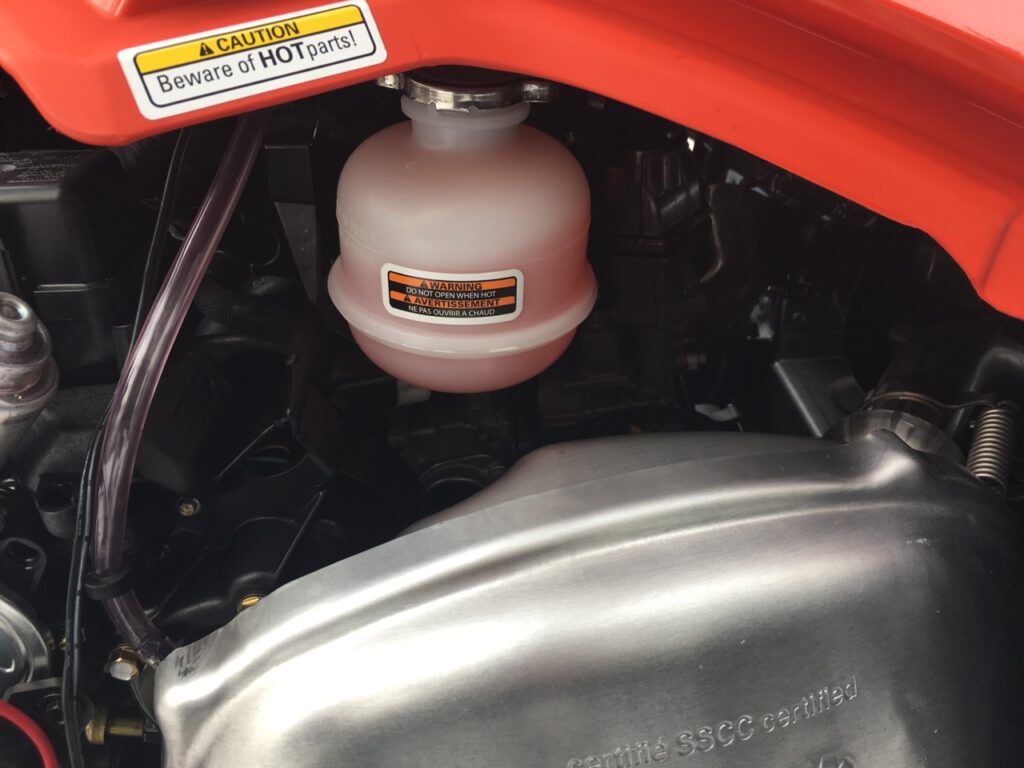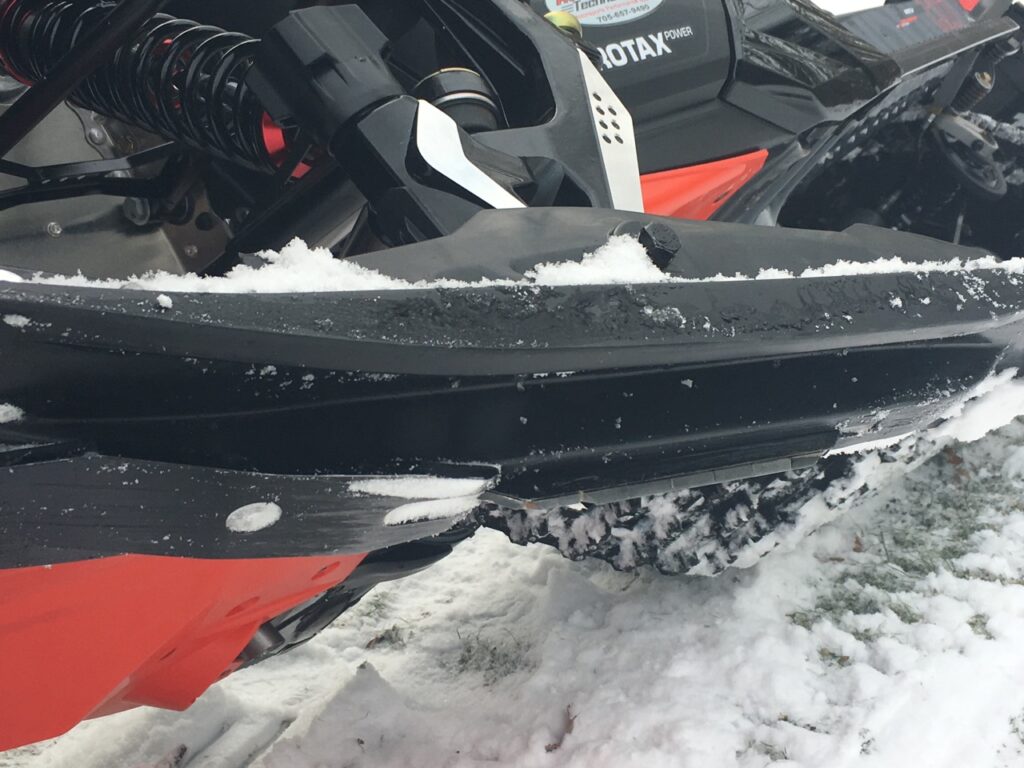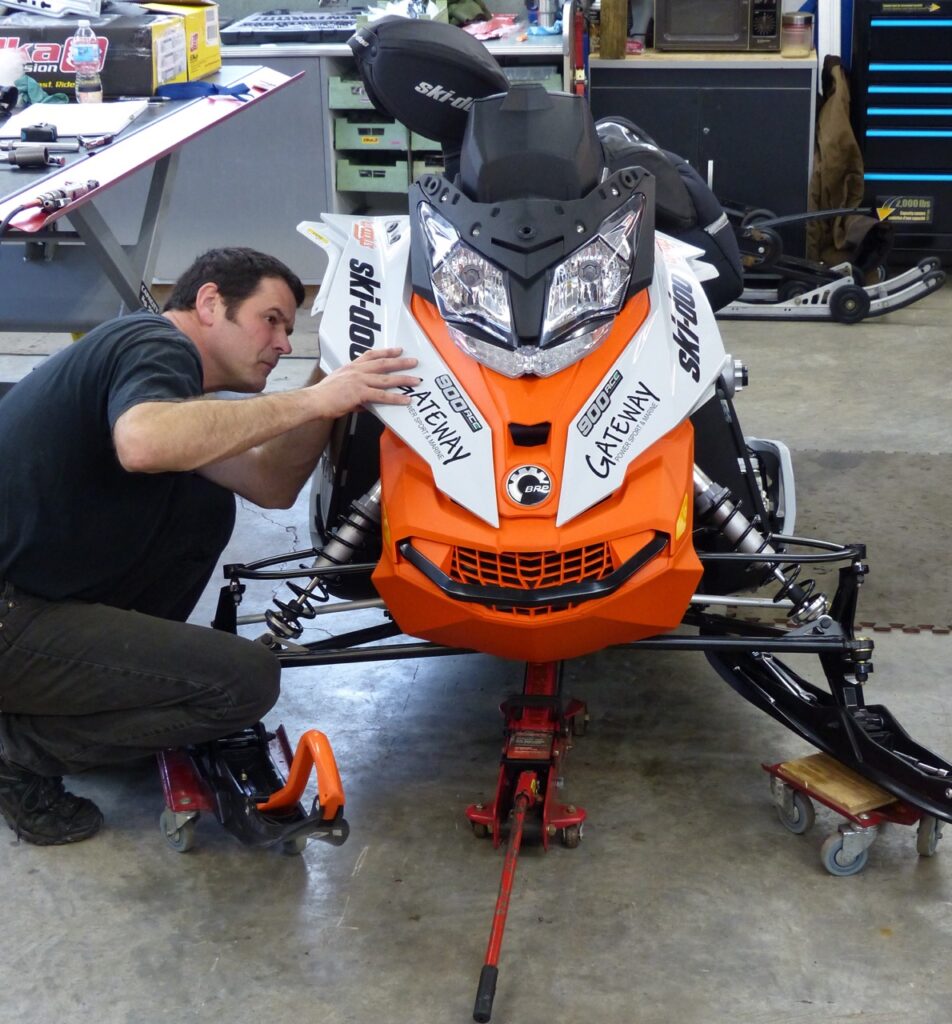Keep Your Sled Running All Winter…
Related: Fine Tuning New Sleds
Even if you’ve prepped your snow machine thoroughly prior to winter, these in season snowmobile maintenance tips will keep you going. So if you’ve already put on more than a few kilometres, now’s a good time to eyeball your sled for flaws like those listed below…
Snowmobile Maintenance Tips For Trail Riders
Service & Warranty
With a new sled, your owner’s manual may suggest an important service check after the initial break in period. This service can catch any early issues under warranty before they get serious. It also enables your dealer to ensure that all settings are recalibrated for on going, regular use. Finally, if you miss this first check in, you may be challenged on subsequent warranty issues that develop.
After that first check up, the manufacturer may suggest usage-based service intervals for checking major components. If you bought a pre-owned sled still under warranty, this is a smart choice. But this doesn’t necessarily take care of the frequently overlooked minor parts that typically take the brunt of wear and tear from snowmobile trail riding.
For the most part, these are inexpensive fixes. But if allowed to go unattended for too long, they can spoil your trail ride or snowmobile tour just as surely as a major breakdown. Keeping your sled running with in season snowmobile maintenance tips starts with a quick visual inspection after every major ride. Here’s what you want to look for…
Check Your Sliders (Hyfax)
These durable items protect the rails on your snow machine from damage. As strong as they are, sliders can wear too thin to do the job properly. If they are looking worn, the cost of replacing them is peanuts compared to a rail job.
Inspect Your Idler Wheels
These small wheels mounted in the rails help guide your track. They’re constantly spinning, but small stones, gravel or even sand can easily gouge their hard rubber edge. So first check that all idler wheels are still in place and rotating freely. Then make sure one or more isn’t beginning to deteriorate (check both outer and inner edges). Again, it’s cheaper to replace an idler wheel than to repair the damage caused by one that’s missing or falling apart.
Eyeball Your Track
Imagine your track as a huge drive belt. This large loop of Kevlar composite revolves under your sled to propel it across the snow. Essentially, your track serves the same function as an automobile tire on the road. It follows then, the better shape your track’s in, the better your sled will move. So check regularly for early signs of damage like an edge torn (some fraying on the edge is normal) by a rock or stump. Also, inspect the track surface for a hole where a stud ripped out or tear where a branch jammed through it.
Tracks operate under a tremendous amount of strain. So like a tiny stone chip on your automobile windshield, even small damage can rapidly become a major issue. That’s why before setting out for a major ride, you must either get it repaired if possible or install a new one.
Measure Your Tension
The right track tension keeps everything turning smoothly underneath your snow machine with full use of available engine power. But too tight and things will start to rub and wear prematurely. Too loose and your sled won’t hook up properly.
Either way, performance decreases and damage starts. So check your tension regularly with a spring scale pulling down in the middle of the track with 20 Lbs. force. Standard specification is usually 1.5″. But this may vary with manufacturer and skid/track length.
Watch Your Snow Flap
A missing or broken snow flap can cause serious engine overheating and needs immediate attention. Sometimes flap damage happens while your sled’s in reverse and the flap gets caught up by your studs and jams in the track.
This flap at the back of your track protects riders behind from snow chunks and debris thrown up by your spinning track. But its primary function is to direct snow thrown up by your track lugs under your chassis to help lubricate and cool moving parts and heat exchanger.
Examine Your Belt
A so-called “blown belt” brings your sled to a sudden and powerless stop. This can occur due to clutch problems. Or from operating the sled under unusually heavy load (such as towing or driving in mushy conditions). Or because you started off with the wrong belt or it just plain wore out. Whatever the case, always inspect the drive belt for obvious wear and carry a right-sized spare.
Top Up Fluids
Just like your automobile, a sled needs coolant, oils and gasoline to operate properly. Before setting out on any ride, top everything up and check your crank case level too. An empty gas tank will just leave you stranded until more fuel arrives. But too little oil or coolant can do serious damage.
It’s also wise to carry a small bottle of isopropyl to add in case you get some watery gas or condensation in your tank. And if your snowmobile calls for premium fuel, you might want to carry some octane booster for those remote stations with only regular at the pump.
Scrutinize Your Carbides
Sooner or later, carbides lose their sharp edge and ability to cut into the trail surface properly. Dull carbides won’t affect your snowmobile’s operating systems. But they can significantly reduce your ability to control your sled. And that tree you hit as a result is likely to impact major components. So check your carbides regularly and either self-sharpen them with a tool like Bite Harder, or replace them with new ones.
Lube Your Grease Fittings
Ideally, use your grease gun after every ride or thermal cycle. But be sure to do it at least a few times over the course of the riding season. Also try and apply grease while the sled’s back end is ‘hanging’ on a stand. This way the grease gets into the normally loaded side of the shafts, instead of just squirting out the bottom unused area of the bushings.
Do Visual Inspections
Whether you do your own snowmobile maintenance and repairs or go elsewhere, you can avoid a lot of unnecessary, annoying and frustrating component issues with regular visual inspections. Obviously, these are much easier when your under carriage isn’t crammed with snow and ice. So either melt it off in a heated location overnight. Or at the very least, remove as much snow build up as possible at the end of a ride, before it freezes hard as rock overnight. Knock the snow off either by lifting and dropping the end of your snow machine several times and/or whacking the tunnel sides and running boards with a rubber mallet.
My Last Word On Snowmobile Maintenance Tips
In summary, you’ll go with more confidence and less aggravation by making these in season maintenance tips a habitual part of your snowmobiling routine. For more mid-season maintenance tips, check out this post from Ski-Doo. And if you’re a novice rider, do yourself a favour and go through my beginners tips!
Thanks to former racers John Sharrard of Accelerated Technologies and Craig Irwin for their contributions to this article.
The tips and advice in this blog are the opinions of the author, may not work in every situation and are intended only for the convenience and interest of the reader, who has the personal responsibility to confirm the validity, accuracy and relevancy of this information prior to putting it to their own use.
Like this post? Follow me on Facebook!

